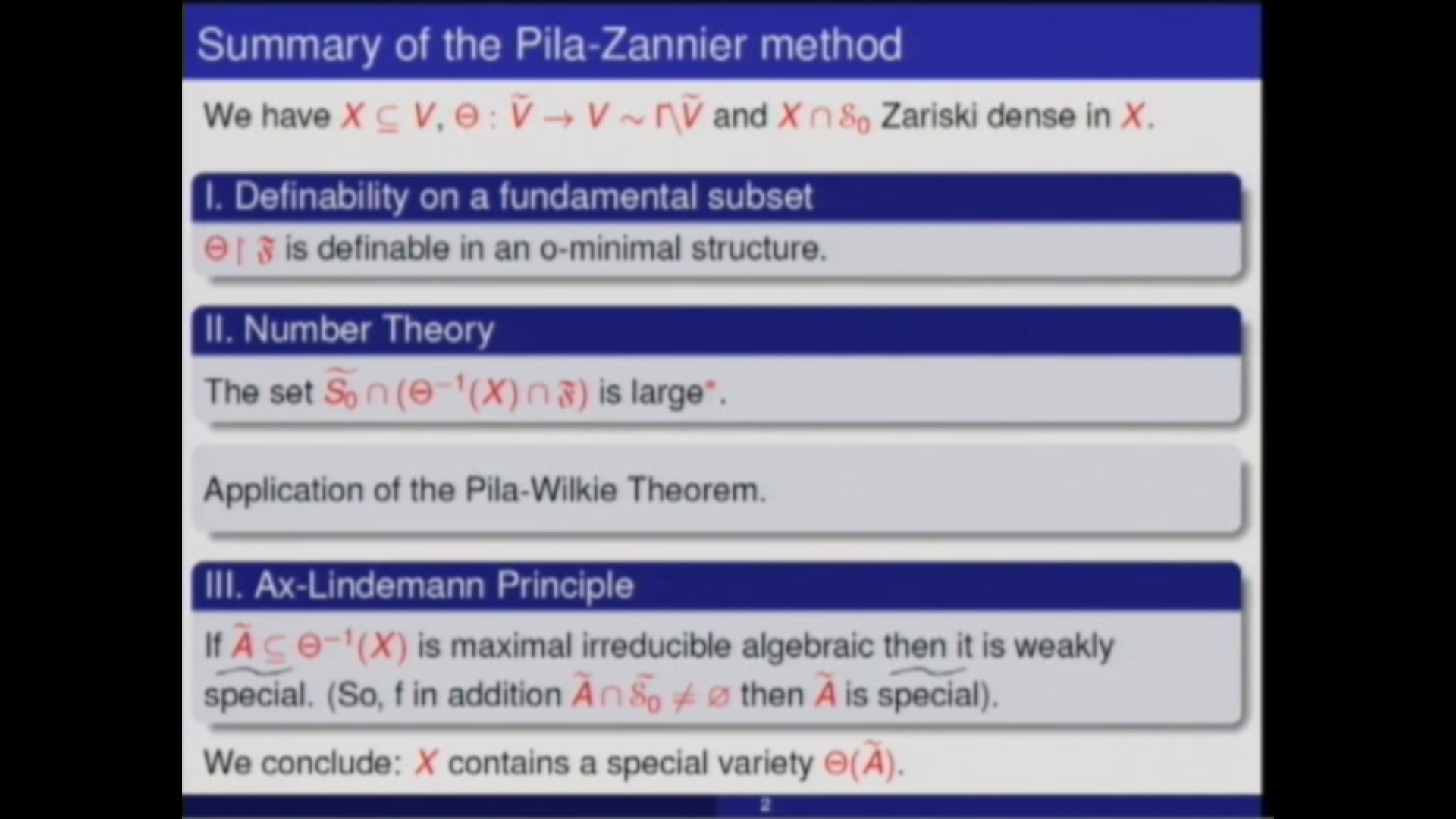O-Minimal Ingredients in Proofs of Arithmetical Conjectures Such as Manin-Mumford and Andre-Oort
Presenter
February 7, 2014
Keywords:
- o-minimality
- Pila-Wilkie theorem
- special points
- Ax-Lindemann conjecture
- Manin-Mumford conjecture
- Andre-Oort
MSC:
- 03C64
- 03C62
- 03C60
- 03Cxx
- 03-xx
Abstract
The goal of these talks is to describe a method which was
rst proposed by Pila and Zannier in their new proof of the Manin-Mumford conjecture ([4]), and since then implemented to various other arithmetical questions. Most notably, it was used by Pila to prove the Andre-Oort conjecture for Cn, [3]. A common feature to the problems which
t this method is their general form: Name a collection of \special" complex algebraic varieties (e.g. Abelian varieties, Shimura varieties, mixed Shimura varieties). Within one such special variety V one isolates a set of \special points" (e.g. the set of torsion points in the group of an abelian variety). Consider an algebraic subvariety X of V (a-priori not necessarily special itself) and assume that X contains \many" (e.g. A Zariski dense set of) special points. The conjectures claim that under these assumptions X itself must be a special variety, or at least contain a nontrivial special subvariety. The novelty in the method of Pila and Zannier is the application of a Theorem of Pila and Wilkie, [8] about rational points on de
nable sets in o-minimal structures. That theorem itself has a similar form to the above conjectures: Assume that X Rn is a de
nable set in an o-minimal structure. If X \ Qn is \large" then X must contain an in
nite semialgebraic set. More precisely, if one removes from X all in
nite semialgebraic sets then the remaining intersection with Qn is \small". The application of Pila-Wilkie to the arithmetic problems goes via three steps: 1. Find a map , de
nable in an o-minimal structure M which transforms the variety V to an M-de
nable set eV Cn. Let (X) = eX . These maps are usually de
ned via classical transcendental maps such as the complex exponentials or the J-invariant. In all cases thus far it is sucient to consider the structure = Ran;exp. 2. Show that if X contains \many" special points in the arithmetical sense then eX contains a \large" set of rational or algebraic points, in the sense of Pila-Wilkie. This step is number theoretic in nature. It requires
rst to show that sends the special points in X to rational (or more generally algebraic) points in eX . Mainly, in order to apply Pila-Wilkie, one is required to obtain precise lower bounds on the number of the rational (or algebraic) points, in terms of their height. 3. After applying Pila-Wilkie one obtains a nontrivial semialgebraic subset eS eX . Replacing S by such subset of maximal dimension, one tries to show that
